Signed on loan off the back of an impressive World Cup campaign with Morocco and a strong domestic campaign with Fiorentina, Sofyan Amrabat’s arrival excited many United fans.
But, so far, it has not panned out the way the club, the player, and the fans hoped it to at Old Trafford, and it looks unlikely that Manchester United will choose to make his loan permanent, with many young players being scouted for the number six position and Kobbie Mainoo having impressed more than Amrabat when playing.
But why has a player who previously looked so good, struggled so much at Old Trafford? UtdDistrict break it down, individually and collectively.
Tactical issues
The environment is everything in football, and the footballing environment at Manchester United is almost entirely different to the one Amrabat was playing in at Fiorentina.
La Viola are a side who are very strictly possession-based, under current manager Vincenzo Italiano they held the second-highest share of possession in all of Serie A last season with an average of 56.1% per game [FBref]. They are very patient with the ball, with Amrabat at the heart of this.
He was able to drop into the middle of their back three in possession and face play with the ball, and completed the most passes per game (59.6) for them with the best pass completion rate (88.8%) across the season in 2022/23 (excluding players with a sample size of under five 90s) [FBref].
By comparison, United this season lie 9th in the Premier League for average possession, seeing 52.2% of the ball [FBref]. Amrabat is completing 55.6 passes on average in the league, completing slightly more short passes per game (albeit at a worse rate) but has played fewer medium and long-range passes at a worse completion rate for both. His passing is evidently down, so why is this?
United may still see more of the ball than not, but, crucially, their approach in possession is different to Fiorentina’s. United this season have often not built through the midfield, looking to go long and direct from the goalkeeper and back four, then fight for second balls higher up the pitch. This is one factor, that can explain why Amrabat is playing fewer passes.
As mentioned previously, Amrabat thrived at Fiorentina when he was dropping into the back three in order to face play. He would frequently circulate play wide, switching attacks to the full-backs and wingers – hence his medium and long passing numbers being better at Fiorentina.
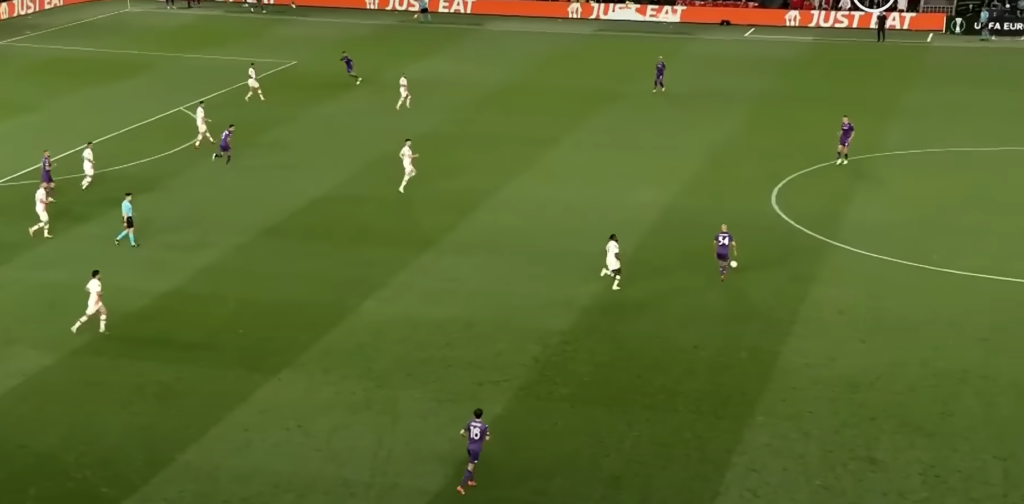
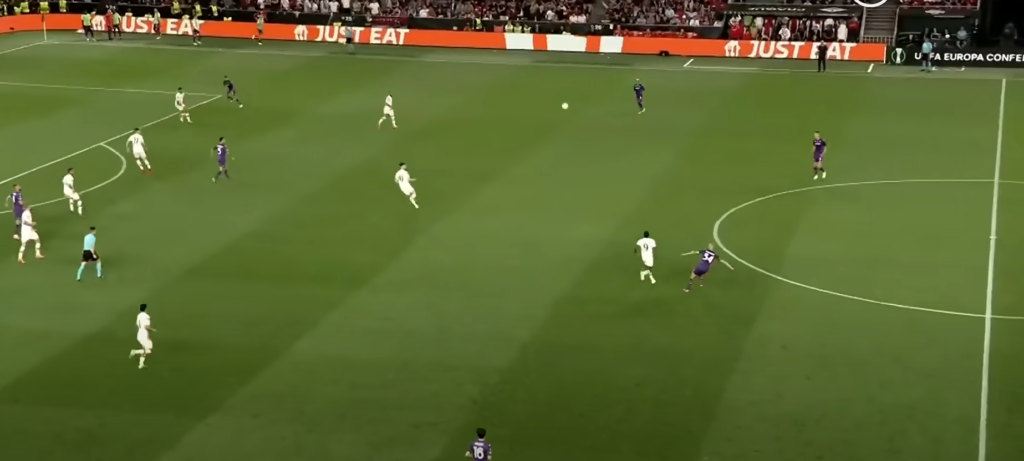
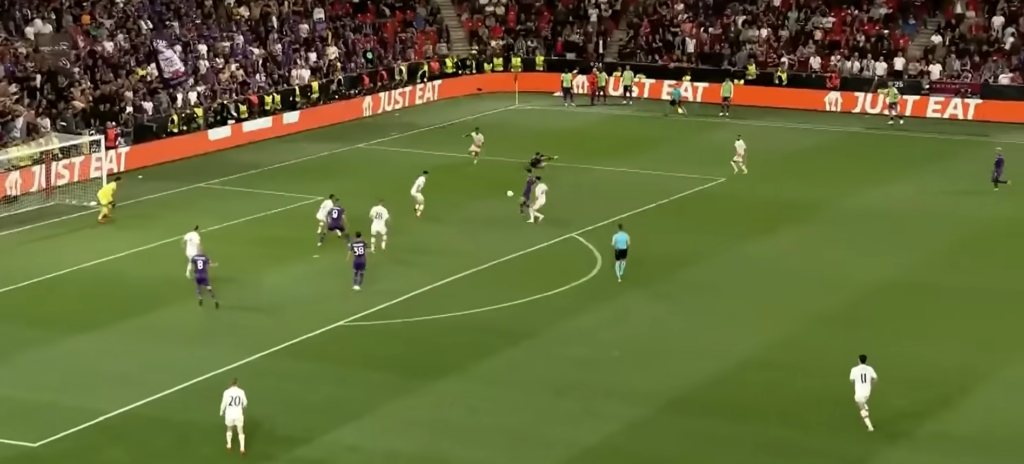
At United, he is doing less of this, often remaining in the number six zone ahead of the backline, where he has struggled to impose himself on games (more on this later). Amrabat’s best moments in possession for United have come when he has attached himself to the first line in possession, whether by dropping from midfield or inverting from full-back, where his earliest United appearances came.
Fiorentina, off the ball, are a more compact side than Manchester United and have a different approach to defending. This, along with the Premier League generally being a faster and more physically intense league than Serie A, has seen Amrabat struggle off the ball at Manchester United.
Off the ball, the team has major issues, and Amrabat especially suffers from this. At Fiorentina, as many Italian teams traditionally do, Amrabat formed part of a zonal defensive system. At United, the midfield goes man-to-man in United’s high press, with the full-backs not consistently committing to this, and the approach to go long from deep and then fight for the second ball means that the midfield have far too much ground to cover. The number six is the biggest victim of this, with United’s other two midfielders usually starting higher.
Individual
United’s tactical environment has not helped him to thrive, but Amrabat has his own individual flaws that have seen him struggle under the Old Trafford lights.
As mentioned above, he has regularly had to play ahead of the ball in United’s first phase and his positional sense has not been the best in this area. Frequently he does not show well enough for the ball behind the first line of pressure, and it makes it more difficult for United to build through the thirds.
Amrabat is also not the most agile player, and at times can struggle to receive with his back to goal and turn out of pressure. This is something fans have preferred about having Kobbie Mainoo in the team, it has been much easier to build out due to the teenager’s superior ability to receive the ball and turn out of pressure with it. It allows Mainoo to impose himself on games better than Amrabat has been able to at Manchester United so far.
His short passing under pressure has mostly been good, but at times he can give the ball away sloppily, allowing opposition teams to transition. Often in transition, he gives away cheap fouls that could very easily be avoided and give United little benefit. Particularly these come about by using his shoulders to block off a runner’s path. In a team that is constantly exposed to defensive transitions, this is particularly unhelpful.
Amrabat likes to back the press up quite aggressively, and sometimes can too readily dive in. If he is beaten, then he lacks the agility and running power to turn back and recover the ball for United. This has seen him beaten too easily at times, and United’s backline has been even more exposed as a result. Cole Palmer’s goal at Old Trafford came from Amrabat not checking his shoulder and cutting the passing lane to him.
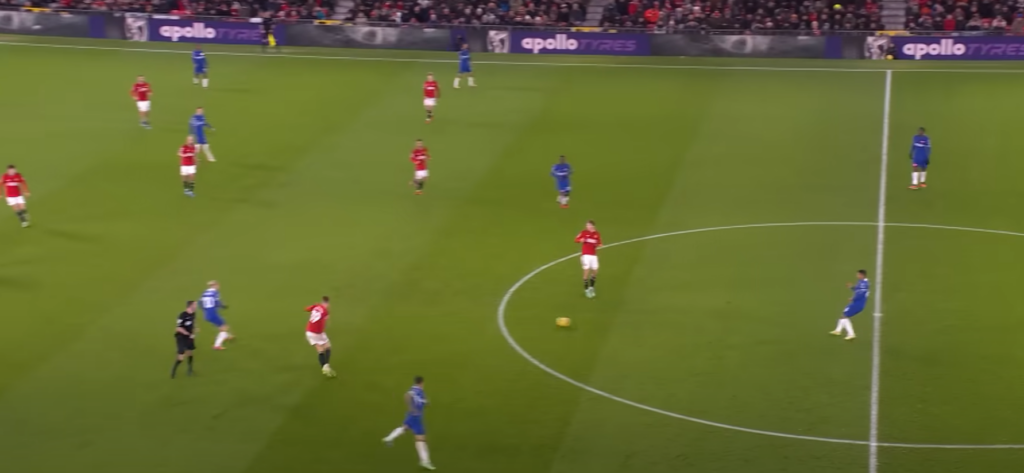
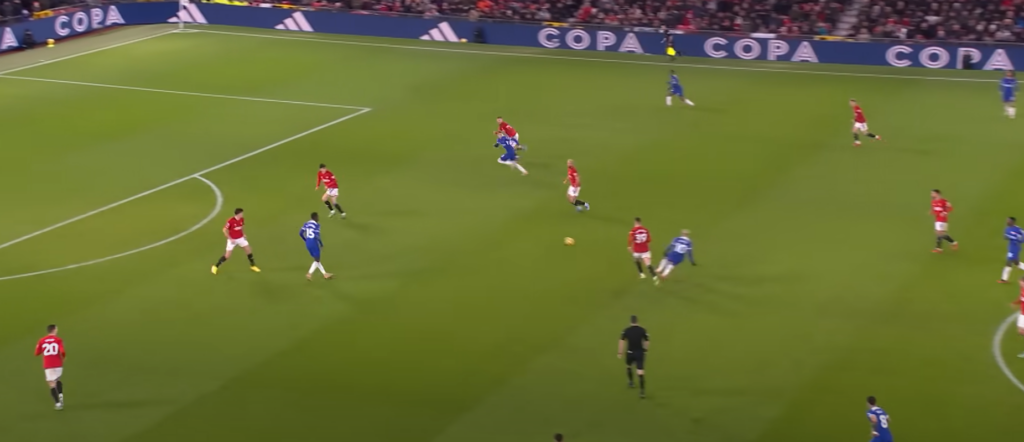
Some of his best performances for United came as a full-back, and arguably his best in midfield was against Brentford, where in the first half, he played next to Casemiro, who assumed the more traditional number six role. This provided him with cover and gave him more license to play aggressively off the ball.
All in all, it has not been the most fruitful loan spell so far, and it makes sense why United don’t want to extend it past this season. Amrabat is a better player than he is showing at Old Trafford, but even if the environment was ideal for him, there are question marks over whether his quality level is really high enough for Manchester United.
In a fully-fit Manchester United team, he does not start over Casemiro for Erik ten Hag, nor is he a better option than Mason Mount, Kobbie Mainoo, or Christian Eriksen in United’s other midfield spot, with Bruno Fernandes a locked-in starter as captain.
United need a new long-term defensive midfield player, but with options such as Amadou Onana, Mats Wieffer, and Lucien Agoumé available, it would make most sense to allow Amrabat to return to Fiorentina.